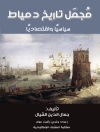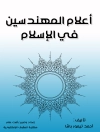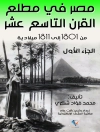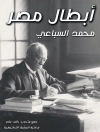Using newly declassified documents, this book explores why U.S. military leaders after World War II sought to monitor the far north and understand the physical environment of Greenland, a crucial territory of Denmark. It reveals a fascinating yet little-known realm of Cold War intrigue and a delicate diplomatic duet between a smaller state and a superpower amid a time of intense global pressures. Written by scholars in Denmark and the United States, this book explores many compelling topics. What led to the creation of the U.S. Thule Air Base in Greenland, one of the world’s largest, and why did the U.S. build a nuclear-powered city under Greenland’s ice cap? How did Danish concern about sovereignty shape scientific research programs in Greenland? Also explored here: why did Denmark’s most famous scientist, Inge Lehmann, became involved in research in Greenland, and what international reverberations resulted from the crash of a U.S. B-52 bomber carrying four nuclear weapons near Thule in January 1968?
Jadual kandungan
.Introduction Exploring Greenland’s Secrets: Science, Technology, Diplomacy, and Cold War Planning in Global Contexts Ronald E. Doel, Kristine C. Harper, Matthias Heymann .- .Part One Arctic Challenges in the Cold War .- .Chapter 1 Defending the North American Continent: Why the Physical Environmental Sciences Mattered in Cold War Greenland Ronald E. Doel.- .Chapter 2 Small state preoccupations: science and technology in the pursuit of modernization, security, and sovereignty in Greenland Kristian Hvidtfelt Nielsen.- .Part Two Controlling Hostile Environments: Geophysical Research in Greenland .- .Chapter 3 Searching for Control: Weather Stations and Data in the Early Cold War Matthias Heymann.- .Chapter 4 Security and the nation: Glaciology in Early Cold War Greenland Janet Martin-Nielsen.- .Chapter 5 Failed Geologies: Danish and American Agendas for the Geological Investigation of Greenland, 1946-1960 Christopher Jacob Ries.- .Chapter 6 Battling the Aurora Borealis: The Transnational Coproduction of Ionospheric Research in Early Cold War Greenland Henrik Knudsen.- .Chapter 7 Danish Seismic Research in Relation to American Nuclear Detection Efforts Anne Lif Lund Jacobsen .- .Part Three < Entanglement and Transformation: Diplomacy and Politics of Science in Greenland .- .Chapter 8 Camp Century – Cold War City under the Ice Henry Nielsen and Kristian Hvidtfelt Nielsen.- .Chapter 9 Cold War Greenland as a Space for International Scientific Collaboration Henrik Knudsen.- .Chapter 10 Cold Atoms: The Hunt for Uranium in Greenland in the Late Cold War and Beyond (1970-1989)Henry Nielsen and Henrik Knudsen.-
Mengenai Pengarang
Ronald E. Doel is an Associate Professor of History at Florida State University, USA. He focuses on the history of recent science and technology.
Kristine C. Harper is an Associate Professor of History at Florida State University. She focuses on the history of recent science and technology.
Matthias Heymann is an Associate Professor of history of science and technology at Aarhus University, Denmark, where he studies the history of the atmospheric sciences. He served as Project Leader of “Exploring Greenland: Science and Technology in Cold War Settings, ” funded by the Carlsberg Foundation.












